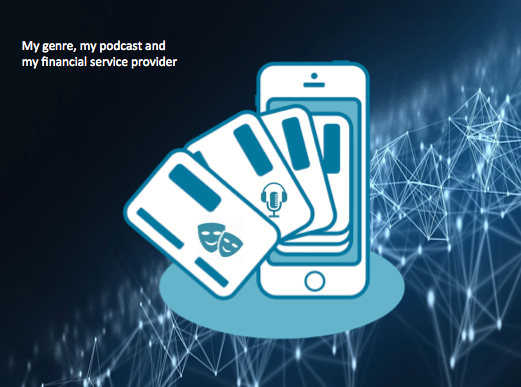People identify themselves with preferences. At a more fundamental level, people have favorites that help them establish their own individuality. For example, movie genre, music, color, or food does not belong to anyone. Still, whenever I come across my favorite cuisine, I feel like I own it.
The same is true with us as consumers. We want our service providers to understand our preferences. Preferences mean 2 things to me – my content and my mode.
Though many financial services providers have addressed the former, the latter is yet to be explored by most of them. Let me dive deep and explain.

My content
My content is simply the content that I want to consume. Netflix has perfected this art so much that whenever I log in, I only get recommendations from the genre which I follow. Moreover, the content recommended is so relevant that I can blindly trust Netflix’s suggestion to be correct almost 90% of the time. This is a pleasant customer experience and no wonder I binge-watch a lot of Netflix Originals just because of this.
I was wondering if this can be applied to Financial Services as well. The answer was right in front of me. YES!
Thanks to the retargeting world and the era of personalization, I am getting relevant content served every day. For example, India’s top banks such as HDFC Bank personalize the experience for their customers on the website homepage. Similarly, Max Bupa serve 1:1 personalized ads to their customers through the Programmatic channel.
Similarly, my bank and my insurance provider are also serving relevant content to me. As a customer, I will be happy with this…:)
The only concern I have is that I am getting bombarded with these communications everywhere. Why is this happening? Maybe they are not addressing my mode.
My Mode
My mode refers to the channel through which I prefer my marketers reached me. To talk more about my mode and its relevance, I will draw a parallel with how we consume our daily news.
The other day, I shared with my friends that I had stopped my newspaper subscription since the previous month. I told them that I consume news mostly through podcasts and audio mediums. Just for curiosity, I asked them about their preferred news source. Two of them told me they watch TV, another friend preferred news on mobile apps and another told me she reads the newspaper. We were really intrigued by the fact how differently people consume news today.
When we checked online on Statistica, we found that TV, social, and online media remain the top three sources of news across various countries. So, if a news channel relies on this research and targets me, they are most likely to reach me through online blogs or promote their TV news channels. By now, you must have guessed that they should rather be offering me a podcast service. In a nutshell, they know my content (news in this case), but they don’t know my mode (podcast).
Conclusion
As a consumer, I wish my financial services provider also had access to my channel preferences. In fact, I believe that today’s digital marketers would also love to reach their customers through their preferred channels. Isn’t it?
Well, the solution is available, but yet to be adopted at scale. It is what is called ‘channel orchestration’ powered by artificial intelligence. Algorithms take into account each user’s historic channel response rate and determine a propensity score for each channel. Based on this score, the algorithms intelligently sequence impressions across channels on which the user is most likely to respond. All this is done without any human intervention, whatsoever.
This significantly enhances the customer experience. This was tested by Max Bupa and they have seen exceptional results – 23% lift in conversions. I am sure that this will be adopted by my financial service provider soon.
Hope knowing my content and my mode, my service provider will become ‘my preferred service provider’.
Yours truly,
A Financial Services Consumer
By Vaibhav Somani | Director – Business Development at Lemnisk

Leave a Reply